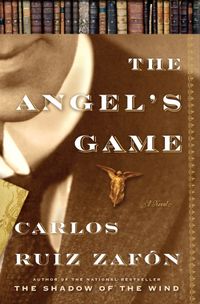I've been reading a bunch of TV and movie reference books lately, most of which have been a disappointment.
There's a great book to be written about the writing and production of BONANZA, something akin to the brilliant and comprehensive GUNSMOKE: A COMPLETE HISTORY. Sadly, A REFERENCE GUIDE TO BONANZA by Bruce Leiby and Linda F. Lieby, now out in paperback, isn't it. A scant eight pages — eight pages!– are given to the creation, writing and production of the show. The bulk of the book is a workman-like episode guide to the 14 seasons and brief synopses of the TV movies, hardly worth the price of purchase. The only thing interesting and worthwhile about the book are the appendices listing various BONANZA merchandise, books, comics, and records. However, I wish the effort the authors put into gathering so much pointless information — like listing all the shows available on video featuring Tim Matheson — had been focused instead on giving us the definitive history of the show. Consider this a lost opportunity.
The same can be said of STEPHEN J. CANNELL TELEVISION PRODUCTIONS: A HISTORY OF ALL SERIES & PILOTS by Jon Abbott. While the book is far more substantive and detailed than the BONANZA book, it draws entirely on previously published articles and books. The author, based in the UK, doesn't appear to have actually interviewed anyone himself, either at Cannell or at studios or the networks that Cannell worked for. The one person he should have talked to, and didn't, was Steve Cannell, the subject of his book. That is a glaring and crippling fault, obvious in every chapter. The author tries to make-up for that major weakness by relying heavily on his own ponderous and uinformed commentary (often repetitive, obvious and pointless), his critical overview (often meaningless and ridiculously fannish) and his interpretation of events (often dead wrong). That was a big mistake. What is especially irritating is the author's tendancy to make an assumption, and then afterwards treat it as fact. For example, in the RICHIE BROCKLEMAN chapter, he writes:
"The intention may have originally been to introduce the aggravating Brockleman into THE ROCKFORD FILES as a semi-regular partner for Rockford (to take some of the pressure off Garner's aching back). Fortunately, reason prevailed, and the character was instead written into the 1976 pilot film before surfacing in a double-length 1978 episode of ROCKFORD."
Most of the Cannell series, even from his days at Universal, are given full chapters and sketchy (to the point of almost being useless) episode guides…but after UNSUB, for reasons not explained, only passing reference is given to TOP OF THE HILL, BOOKER, BROKEN BADGES, 100 LIVES OF BLACK JACK SAVAGE, PALACE GUARD, MISSING PERSONS, THE LAST PRECINCT, COBRA, STREET JUSTICE, HAWKEYE, MARKER and three of his all-time biggest hits, RENEGADE, THE COMMISH and SILK STALKINGS. Perhaps the author just wasn't able to get video tapes of those shows from his circle of collectors, who he thanks in his acknowledgments, which noticeably doesn't include the names of any people associated with Stephen J. Cannell Productions or his shows. It begs the question — why didn't he actually talk to anybody? I know many of these writers, producers and directors, and I can tell you, they aren't hard to find or unwilling to share their experiences. Maybe he couldn't afford the long-distance phone calls.
All that said, there is a lot of useful information in the book and, since the definitive book on Cannell has yet to be written, this is not a bad place-holder until somebody writes it (hopefully, Cannell himself will do it some day!).







